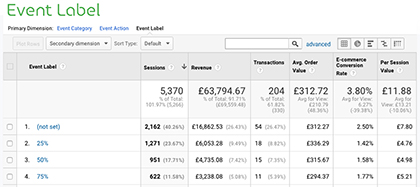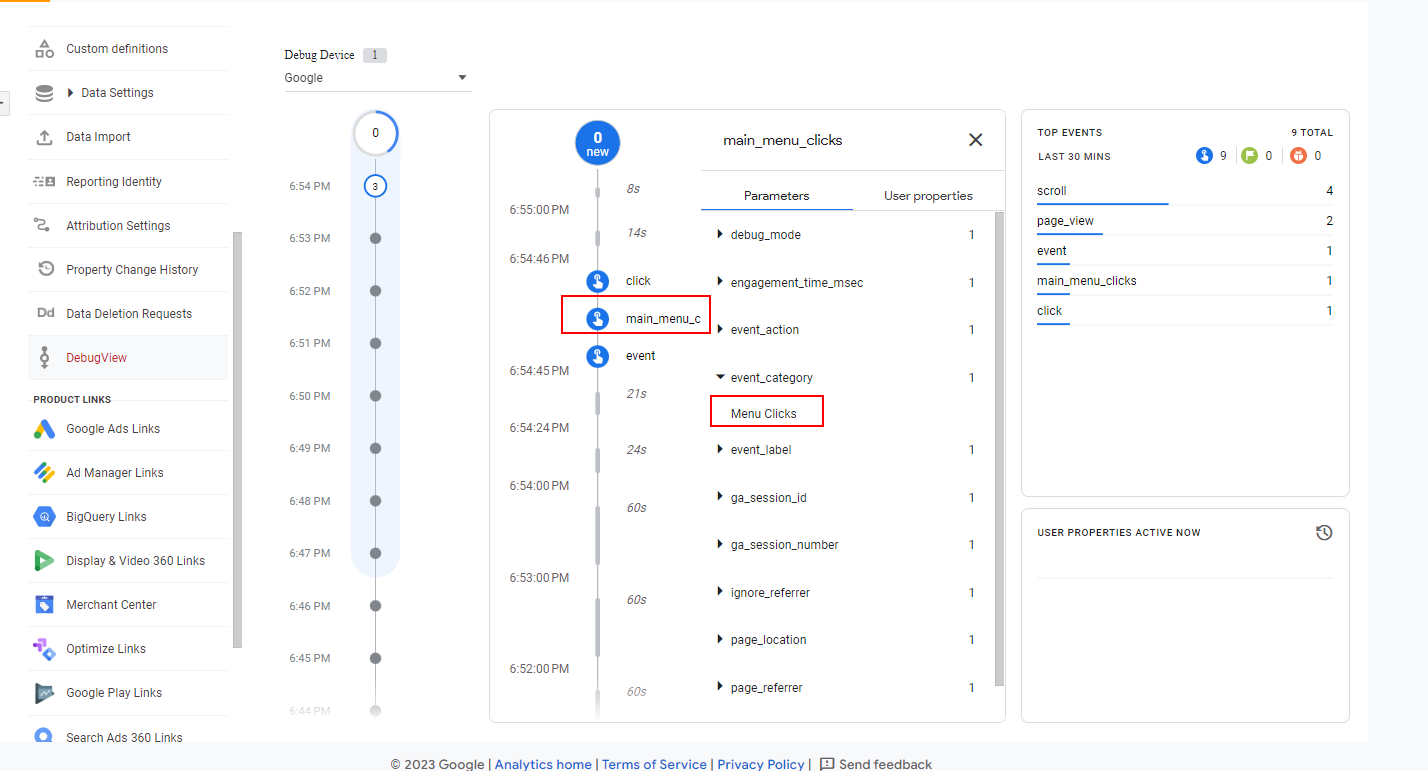The Main Principles Of Google Analytics Event Tracking
Wiki Article
The Of Google Analytics Event Tracking
Table of ContentsThe 6-Minute Rule for Google Analytics Event TrackingThe Google Analytics Event Tracking StatementsThe Buzz on Google Analytics Event TrackingHow Google Analytics Event Tracking can Save You Time, Stress, and Money.The Buzz on Google Analytics Event TrackingThe Best Strategy To Use For Google Analytics Event Tracking

If you're mosting likely to establish up event monitoring manually, then you're going to need to include some additional code to the aspects you desire to accumulate data from. The code you're going to collaborate with will look something similar to this: There are four parts within that code snippet that you're mosting likely to require to define on your own: event, Group, occasion, Action, event, Tag and event, Worth.
As you can see, two of these are required (category and action) while tag and worth are optional. It all depends upon the kind of info you desire passed on back to Google Analytics when a user clicks the specified element (Google Analytics Event Tracking). It will certainly be much easier to specify these elements if you evaluate your website and determine which elements/actions you intend to track
Some Known Incorrect Statements About Google Analytics Event Tracking
Currently, you'll be asked to define the and and you'll desire to choose from the drop-down menu that appears when you click on. This will certainly bring up the same event monitoring components we considered earlier, which you'll need to complete. As soon as you've defined these, you can relocate to the 2nd box and pick the trigger that will fire your tag.On the following display, you'll additionally have an area for naming your trigger and, if you click the box, you'll see a checklist of the different triggers you can select. In this situation, we wish to pick and after that choose the choice listed below. You'll establish the trigger to only fire when a component is clicked with a Link that contains the.
Easy - Occasion monitoring! Event tracking gives you an image of how individuals involve with your website and company. Review on as we discover everything you need to understand, including what it is, why you need to track events, how to handle occasions information, and various other relevant FAQs you may have.
4 Simple Techniques For Google Analytics Event Tracking
You can switch in between your occasion groups, actions, and labels in the Leading Occasions report. The Event Pages report shows the pages where events are triggered.It shows you the path they take as they move from one event to the next and helps you to identify which content engages your audience one of the most. Occasions in Google Analytics linked here have 4 major aspects. They are also a part of the occasion monitoring code. Google Analytics uses these codes to track customer communications and group them right into event records.
After that, choose "Variables" > "Configure". A listing from this source of the criteria you can track on your internet site gets on the right. Under Clicks, Forms, and Video clips, double-check each criterion. After examining all necessary areas, you can click "X" to close the window and return to the Summary menu on the.
Google Analytics Event Tracking for Dummies

Selecting "False" will stop that session from being a bounce. If you haven't done so, you might require to set up a variable in the Google Analytics Settings box. Click "New Variable ..." if you can't discover one to choose. After this, enter your GA tracking ID in the Tracking ID field.
To do this, comply with the next collection of activities: After setting up the fields, choose the "Triggering" section. When configuring your new trigger, click the "+" switch, after that the "pencil" switch, then choose your trigger type.
What Does Google Analytics Event Tracking Mean?

When it familiarizes which areas and aspects are leading clients via your conversion funnel, you still won't recognize. So, without event monitoring, GA reports will just count check outs as single-page sessions, also if users invest a lot of time on one page and involve with it considerably (and a bounce).
How does event monitoring achieve this?Single-page sessions understood as bounces start and wrap up on the exact same web page. Without occasion monitoring, GA will certainly identify a customer's visit as a bounce if they don't browse to another web page, no matter just how they interact with it. As an example, a video-rich page can have a higher bounce rate if events are not tracked.
Things about Google Analytics Event Tracking
For GA to take event hits right into account when determining bounce prices, you need to pick "Non-interaction occasion" as "False" during the GTM arrangement. Setting "occasion objectives" with occasion action is an excellent means to keep track important source of customer activities you worth extremely, such as brand-new lead submissions or click a contact us to action.Report this wiki page